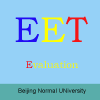-
Rubrics
普通类 -
- 支持
- 批判
- 提问
- 解释
- 补充
- 删除
-
-
Rubrics
AS EDUCATORS SEEK more authentic and performance-based assessments, rubrics are becoming an increasingly popular evaluation tool. This article introduces the rubric and briefly illustrates how it can be used to measure and improve student performance.-
What is a Rubric?
A rubric is an evaluation tool that describes quality of work on a continuum from excellent to poor. Specific characteristics of performance are detailed for all quality levels. A rubric measures student work against real-life criteria and is referred to as a form of authentic assessment.
There are two types of rubrics - analytic and holistic. Analytic rubrics identify and assess various components or criteria for the work. Holistic rubrics assess student work as a whole.
The analytic rubric below lists several criteria for evaluation of a student bridge constructed with balsa wood. To be a quality bridge it must demonstrate certain attributes, such as the ability to support weight and span a distance. In the rubric presented, the left column identifies the criteria and the three columns to the right of the criteria describe the quality, from excellent to needs improvement. Using the rubric below, an evaluator can easily identify what distinguishes a good bridge from a poor one.
CRITERIA QUALITY
Excellent Good Needs Improvement
Load supported greater than 12 kg 6 to 12 kg less than 6 kg
Weight of bridge less than 30 grams 30 to 60 grams over 60 grams
Bridge span greater than 385 mm 360 to 385 mm less than 360 mm
Ability of matchbox does not stop stops 1 or 2 times stops 3 or more times or cannot roll entire length of bridge
car to roll across bridgeA rubric for evaluating construction of a balsa wood bridge.
-
Building a Better Bridge
.jpg)
This balsa wood bridge needs improvement.

This excellent bridge illustrates how use of a rubric can improve performance.
Many experts believe that the use of rubrics results in improvement in both quality of work and learning. Students like rubrics because they focus learning by clearly identifying teachers' expectations. Students can use the tool to improve their work.
Teachers like rubrics because rubrics allow them to easily identify and document the quality of work. Rubrics serve as reminders of the characteristics of each level of quality and are typically viewed as fair and objective.-
Developing Your Own Rubric
Although rubrics are becoming popular and many are available on educational websites, chances are you will need to develop your own. The first few rubrics you develop may require some time. After you have some experience with rubrics, you will likely find that the time required to design them is well worth the improvement in student performance. The following steps will help guide design and use of your own rubrics:
Determine the concepts to be taught and identify the learning objectives.
List the criteria to be evaluated.
Describe degrees of quality (often in a grid), starting with the best and worst quality and then filling in the middle.
Share the rubric with students before they complete the assignment so students understand the criteria for evaluation.
Use the rubric to evaluate student work to determine if they have met the learning objectives. (Rubrics are also often used for self- and peer-assessment with time provided after peer-assessment for revision.)-
Put on a Happy Face
The example below is a holistic rubric designed to evaluate happy face drawings. (Remember a holistic rubric assesses work as a whole.) A numeric score is included for each level of quality, but rubrics may or may not include scores associated with each quality description.
HAPPY FACE QUALITY
4 - Displays amazing detail and color; highly elaborate theme; unique and origina
3 - Displays detail and color; theme is present with some elaboration; displays initiative to develop original work
2 - Displays some detail and/or color; theme is present but not fully developed; evidence of some initiative to develop original work
1 - Displays a lack of detail, color, and theme; very little or no initiative in developing original workEXAMPLE




A holistic rubric for evaluating happy face drawings and sample drawings illustrating the performance continuum.
Rubrics can be developed for all types of activities and are easy to adjust for different grade levels or content. After you have tried a few rubrics you may find you (and your students) will want to use them for everything.-
Author
Lisa Schafer
Graduate Student
SDSU Educational Technology -
-
- 标签:
- rubrics
- student
- criteria
- work
- students
- rubric
- bridge
- develop
- displays
- quality
-
加入的知识群:



学习元评论 (0条)
聪明如你,不妨在这 发表你的看法与心得 ~